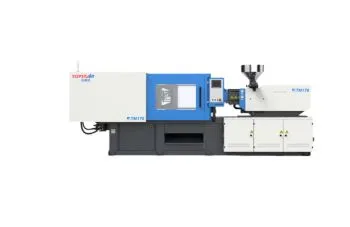How does precise melt control of plastic molding machine reduce scrap rates?
A well-tuned plastic molding machine delivers consistent melt quality, directly reducing the number of defective parts. By controlling melt temperature, pressure, and flow, manufacturers can optimize material utilization and maintain part tolerances. When a plastic injection molding machine achieves precise melt control, it stabilizes the entire molding cycle. As a result, operations run more smoothly, and scrap rates are significantly reduced.
Plastic Molding Machine Melt Control Systems and Their Impact on Part Consistency
Plastic molding machines rely on advanced melt control systems to stabilize molten polymers before the injection molding process. Closed-loop thermostats, multi-zone barrel heaters, and automatic screw speed control systems work together to maintain optimal melt temperature. For example, the closed-loop system adjusts the power to each heating zone in real-time, quickly responding to any deviations. In this way, the injection molding machine can avoid hot or cold spots, which can lead to inconsistent part quality or internal stress.
Additionally, dynamic screw speed regulation plays a crucial role. Plastic injection molding machines adjust screw speed based on the sensed melt viscosity to ensure that the melt remains uniform, regardless of subtle changes in resin batches or environmental conditions. As a result, process fluctuations are significantly reduced, resulting in a stable and repeatable molding process with lower scrap rates.
Resin Properties and Melt Quality for Plastic Molding Machine
To achieve precise melt control on a plastic molding machine, it is first necessary to understand the properties of the resin itself. Each polymer, whether it is ABS, polypropylene, or high-performance engineering plastics, has unique melt properties. Viscosity, thermal conductivity, and heat capacity affect the material’s response to barrel heating and shear. For example, hygroscopic materials such as nylon absorb water, which evaporates as vapor during the melting process, causing bubbles and temperature instabilities. Conversely, low-viscosity resins may flow too fast, causing flash or excessive packing.
Therefore, proper material preparation is critical. Pre-drying the resin in a desiccant dryer or vacuum system removes moisture that can affect melt stability. Additionally, consistent particle size and colorant concentration ensure uniform heat absorption and flow properties.
Process Parameters: Optimizing Melt Flow
Precise melt control for plastic molding machines also depends on optimized process parameters. Injection speed, backpressure, screw residence time, and barrel temperature profile all affect melt quality. For example, too little backpressure can result in incomplete plasticization, while too much backpressure can generate excessive shear heating, causing the melt temperature to exceed the set point. The key is to balance these parameters to achieve consistent melt viscosity and flow characteristics.
In practice, operators establish baseline settings for each parameter and then perform a design of experiments to determine the optimal range. For example, varying the backpressure in small increments while monitoring the melt temperature and torque can help identify the optimal setting. Similarly, adjusting the screw residence time ensures complete melting without excessive shearing of the polymer, which can reduce molecular weight and degrade mechanical properties.
Sensor Integration for Real-Time Melt Monitoring
Integrating advanced sensors into plastic molding machines has revolutionized melt temperature control. Conventional in-barrel thermocouples only provide point measurements, but combining them with melt pressure sensors and infrared temperature detectors provides a comprehensive understanding of melt behavior. For example, a pressure sensor mounted near the nozzle can detect a sudden drop or spike in viscosity, signaling potential problems such as material blockage or water evaporation.
Externally mounted infrared sensors monitor the melt at the nozzle tip without direct contact, providing fast-response melt temperature data. When this data is transmitted to the machine controller, the barrel heater output or screw speed can be automatically adjusted within milliseconds.
Benefits of Precision Melt Control Reduced Scrap Rates
When plastic molding machines consistently maintain target melt temperature and viscosity, scrap rates drop dramatically. Part-to-part uniformity improves, resulting in fewer scraps due to undershot, flashes, or warpages. In addition, precise melt control minimizes material degradation, maintains polymer properties, and increases the utilization of regrind without sacrificing quality.
Additionally, stable melt conditions reduce cycle time fluctuations, increase output, and lower unit costs. Overall equipment efficiency improves due to fewer process interruptions to adjust settings or clean up defects. From a sustainability perspective, reducing scrap aligns with corporate social responsibility goals, while cost savings help improve profitability.
Melt Control for Long-Term Success
Precision melt control for plastic molding machines is more than just a technical improvement; it is a strategic imperative for reducing scrap and achieving operational excellence. By





